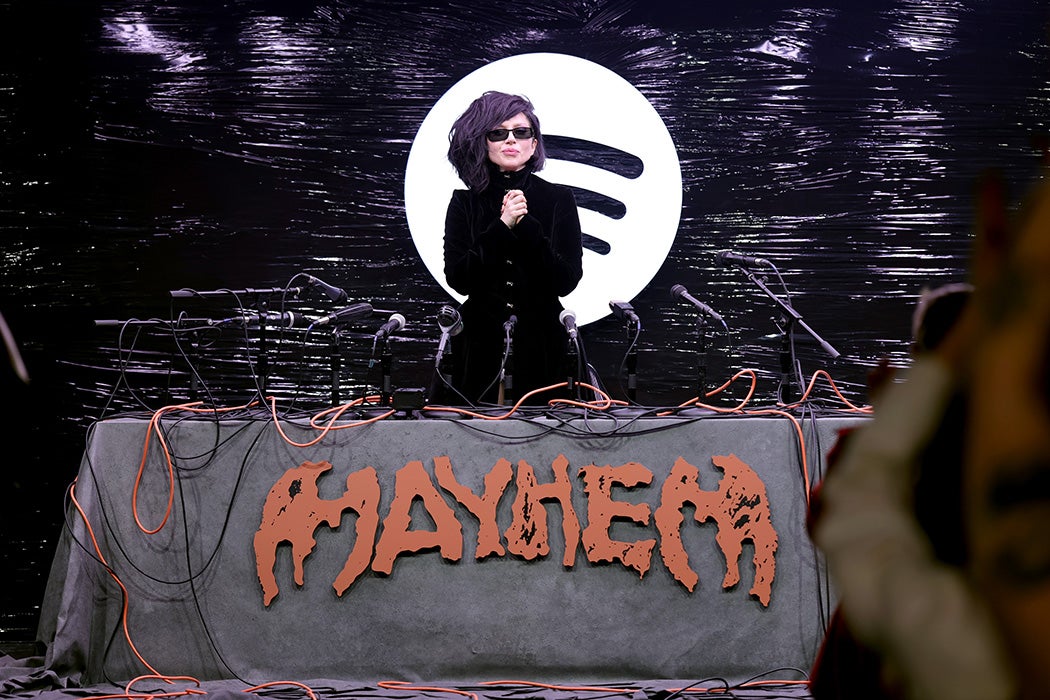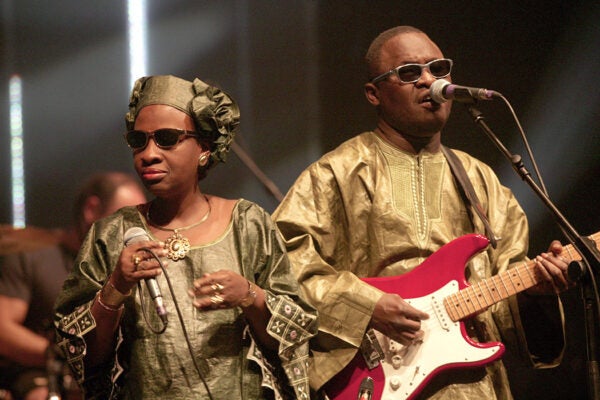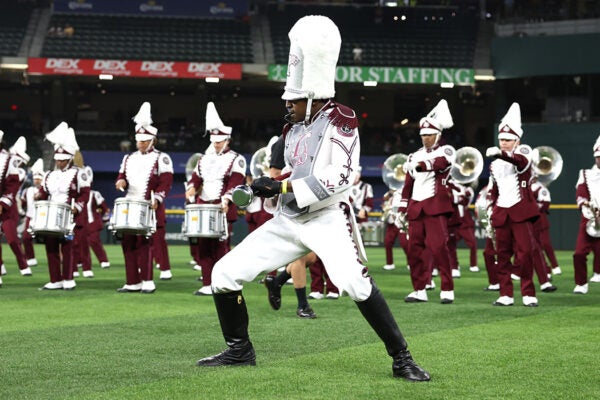Lady Gaga’s 2025 album Mayhem has been lauded as a return to form, referencing the bass-heavy, dance-inflected songs of her early-career tracks such as “Just Dance,” “Bloody Mary,” and “Marry the Night.” This is also true on a textual level. Consider the lyrics of the album’s tracks: “Abracadabra” suggests that you “Feel the beat under your feet, the floor’s on fire” and asks that the “Phantom of the dance floor, come to me”; “Garden of Eden” tells you to “Go get your friends and meet me on the floor” and lets you know that “Bodies gettin’ close under the lights”; and the disco-inflected “Zombie Boy” claims, “We about to be up all night, wakin’ up a zombie.”
By using dance and disco-inflected beats and similar lyrics, Gaga is going back to a recent era of dance-pop music, colloquially known as recession pop.
“Recession-era electronic dance pop envisioned utopian environments of blissful release by narrating the interaction among dancers, the DJ, and the dance floor,” writes literature and utopian studies scholar Carter F. Hanson in a 2014 article that appeared in Utopian Studies.
Hanson examines the markedly dance-pop output of Lady Gaga, Ke$ha, Usher, and Jennifer Lopez between 2009 and 2011 and its success on the radio—beyond just the club—among mainstream audiences.
“New pop singers such as Lady Gaga and Ke$ha launched to stardom, and established performers, such as Jennifer Lopez, rejuvenated their careers with a slew of catchy dance hits that five years earlier would likely have been consigned mostly to clubs,” he writes. Almost three decades after Disco Demolition Night, and three decades of resistance to the genre, beginning in 2009, electronic dance pop made a major resurgence in the United States in terms of sales, artist recognition, radio airplay, and chart impact.
These tracks weren’t just melodically and rhythmically similar, Hanson explains. “The most noticeable commonality is that they are songs specifically about dancing.” He credits Lady Gaga’s debut single “Just Dance” for kicking off the trend. Other notable hits include Cascada’s “Evacuate the Dancefloor”; Sean Kingston’s “Fire Burning”; Ke$ha’s “Tik Tok” and “We R Who We R”; Flo Rida’s “Club Can’t Handle Me”; Usher’s “More”; Jennifer Lopez featuring Pitbull’s “On the Floor” (2011); and Britney Spears’ “Till the World Ends”.
Hanson sees the rise of dance pop in the US as reflective of utopian desires in the face of economic recession. “Instead of ‘merely’ exhorting listeners to dance, recent dance hits by Lady Gaga, Ke$ha, Usher, and others project an alternative utopian space beyond the reach of economic hardship,” he writes.
More to Explore
What Lady Gaga Teaches us about Pain and Gender
In fact, Lady Gaga’s “Just Dance” from the 2008 album The Fame relays the narrator’s experience of being in a club—losing her phone, checking out the other dancers, asking, “How’d I turn my shirt inside out?”—more than it focuses on dancing itself. “Dance in the Dark,” from the 2009 album The Fame Monster, describes people who favor dancing to their own beat and away from everyone’s eyes: “Some girls won’t dance to the beat of the track…Baby loves to dance in the dark ’Cause when he’s looking, she falls apart.”
“Bloody Mary,” from the 2011 Born This Way, contains the refrain “I’ll dance, dance, dance / With my hands, hands, hands / Above my head, head, head” that, thanks to Netflix’s Wednesday, became a TikTok sensation ten years after its original release.
Lady Gaga aside, several dance-pop hits attempt to narrate the entirety of the “disco experience,” directly describing the act of dancing, the dance floor, and the DJ. In this way, they fashioned a vision of a better, alternative world or a reality of fulfillment.
Weekly Newsletter
“These hits manifest ‘wishful images,’ however escapist or self-fixated, of a different and better life […]part of the realm of utopian wishing,” writes Hanson.
Ultimately, however, the widespread, mainstream appeal of this music—with its conduit being the radio and, subsequently, streaming apps—limits the reach of its utopianism. This was true at the time of the article’s publication, and it’s true in 2025.
“While hits by Lady Gaga and Usher are certainly played in some dance clubs…their wide popularity as pop songs, resulting in mass radio airplay and digital downloads, means that they are primarily heard by individual consumers as discrete songs,” reasons Hanson.
Consequently, even though commercially popular, the music “cannot replicate the two vectors that have historically converged to produce utopian energies: the cultural synergies of a rave or underground nightclub and the sonic characteristics of dance music mixed by a rave or club DJ.”
Support JSTOR Daily! Join our membership program on Patreon today.








